Hill Aerospace Museum is now home to four, high-profile aircraft: the XP-80 Shooting Star, the SR-71 Nighthawk, F-117 Blackbird and the U-2 Dragon Lady. These four aircraft, occasionally referred to as Skunk Works jets, are part of an elite group of aircraft created by the Skunk Works division of Lockheed Martin. The Skunk Works division is known for creating highly sophisticated aircraft with the latest technologies to accomplish seemingly impossible missions. The legacy and history of the Skunks Works division began in 1943.
P-80 Shooting Star
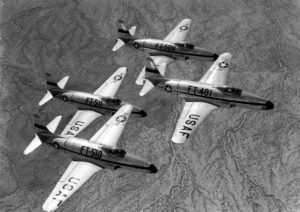 During the middle of the United States’ involvement in World War II, the Pentagon asked Lockheed’s chief engineer Clarence “Kelly” Johnson to create a jet fighter to combat the German jet fighters. The project was to be top secret and the Pentagon gave Johnson and his Skunk Works team only 150 days to complete the project. Beating the clock, Johnson and his team designed, built and delivered the XP-80 Shooting Star in 143 days. The Shooting Star, later designated as P-80, would become the victor of history’s first jet-to-jet dogfight in 1950 against a Russian MiG-15. In 1955, the 313th Fighter-Bomb Squadron flew the Shooting Star out of Hill Air Force Base (AFB).
During the middle of the United States’ involvement in World War II, the Pentagon asked Lockheed’s chief engineer Clarence “Kelly” Johnson to create a jet fighter to combat the German jet fighters. The project was to be top secret and the Pentagon gave Johnson and his Skunk Works team only 150 days to complete the project. Beating the clock, Johnson and his team designed, built and delivered the XP-80 Shooting Star in 143 days. The Shooting Star, later designated as P-80, would become the victor of history’s first jet-to-jet dogfight in 1950 against a Russian MiG-15. In 1955, the 313th Fighter-Bomb Squadron flew the Shooting Star out of Hill Air Force Base (AFB).
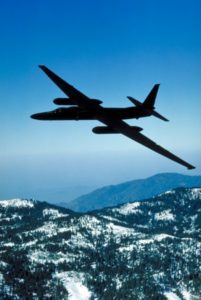
Dragon Lady
The Skunk Works division did not stop with the Shooting Star when it came to pushing the limits of aerodynamics. In 1954 the Skunk Works team delivered the U-2 Dragon Lady—the world’s first aircraft dedicated to espionage. The Dragon Lady could cruise at 70,000 feet taking reconnaissance photos and helped the United States avoid war in Europe and a nuclear crisis in Cuba. Those reconnaissance cameras were actually repaired here at Hill AFB. However, the U-2 was only superior to enemy spy aircraft and technologies for less than a decade before it was knocked out of the lead. To stay in competition, the United States needed another reconnaissance aircraft that could fly higher than the U-2 Dragon Lady and out-race enemy attack aircraft and weapons.
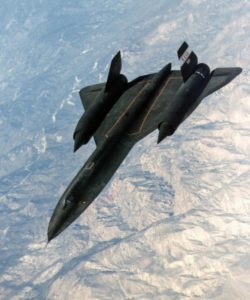
The Blackbird
Again, the Pentagon turned to the Skunk Works division to create such a plane. In 1964 the Skunk Works team delivered the SR-71 Blackbird, a titanium plated aircraft coated in heat-dissipating, black paint that could fly at Mach 3 (over 2,000 mph) and survey 100,000 square miles of the Earth at 80,000 feet. The SR-71 still remains the world’s fastest and highest-flying aircraft.
The Stealth Fighter
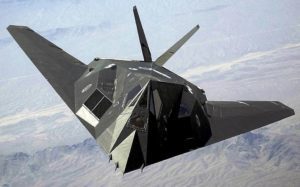 The Skunk Works team could tick the boxes on creating the highest and fastest aircraft, but they had yet to accomplish what would have seemed impossible to Orville and Wilbur Wright 70 years earlier: an “invisible” aircraft. Though a truly invisible aircraft is still a dream of pilots, engineers and aircraft enthusiasts, an aircraft that could go undetected by radar and sensors became a reality in 1981 with the introduction of the F-117 Nighthawk. Though not as sleek as the SR-71 Blackbird, the Nighthawk deflected radar signals by its angled surfaces. The F-117 had quite the resume after it was retired, seeing action in the invasion of Panama, the Gulf War, Kosovo, missions over Afghanistan and operations in Iraq.
The Skunk Works team could tick the boxes on creating the highest and fastest aircraft, but they had yet to accomplish what would have seemed impossible to Orville and Wilbur Wright 70 years earlier: an “invisible” aircraft. Though a truly invisible aircraft is still a dream of pilots, engineers and aircraft enthusiasts, an aircraft that could go undetected by radar and sensors became a reality in 1981 with the introduction of the F-117 Nighthawk. Though not as sleek as the SR-71 Blackbird, the Nighthawk deflected radar signals by its angled surfaces. The F-117 had quite the resume after it was retired, seeing action in the invasion of Panama, the Gulf War, Kosovo, missions over Afghanistan and operations in Iraq.
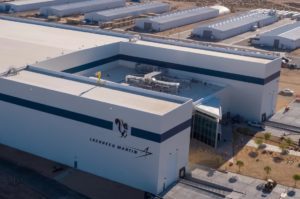 The legacy of the Skunk Works division cannot go unnoticed as they produced not only history-making jets, such as the P-80 in record time, but they created both the fastest manned aircraft and an aircraft that became invisible to enemy detection technologies. The Skunk Works division is still in operation today, still working to create top-secret aircraft that exceed the capability imaginations of aircraft enthusiasts. Hill Aerospace Museum is lucky enough to have all four aircraft listed in this blog in their collection. Visit Hill Aerospace Museum to see these remarkable Skunk Works aircraft and to learn how Hill AFB took part in their history.
The legacy of the Skunk Works division cannot go unnoticed as they produced not only history-making jets, such as the P-80 in record time, but they created both the fastest manned aircraft and an aircraft that became invisible to enemy detection technologies. The Skunk Works division is still in operation today, still working to create top-secret aircraft that exceed the capability imaginations of aircraft enthusiasts. Hill Aerospace Museum is lucky enough to have all four aircraft listed in this blog in their collection. Visit Hill Aerospace Museum to see these remarkable Skunk Works aircraft and to learn how Hill AFB took part in their history.
Sources:
- https://www.lockheedmartin.com/en-us/news/features/history/skunk-works.html
- https://www.politico.com/news/2021/09/06/skunk-works-lockheed-martin-facility-509540
- https://www.lockheedmartin.com/en-us/who-we-are/business-areas/aeronautics/skunkworks/skunk-works-origin-story.html
- https://www.lockheedmartin.com/en-us/products/u2-dragon-lady.html
